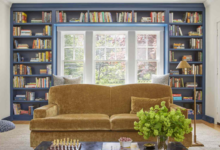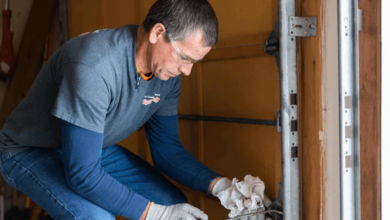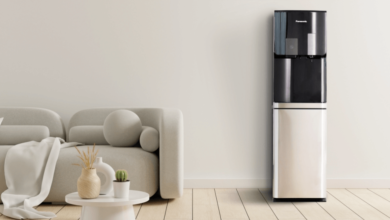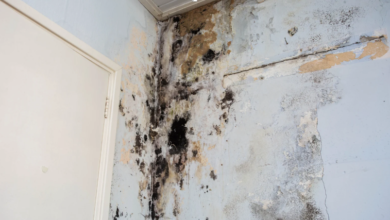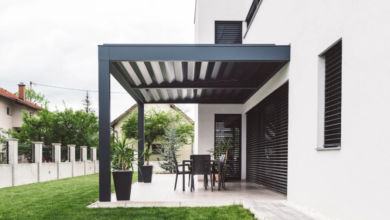11 Common Interior Painting Mistakes and How to Avoid Them
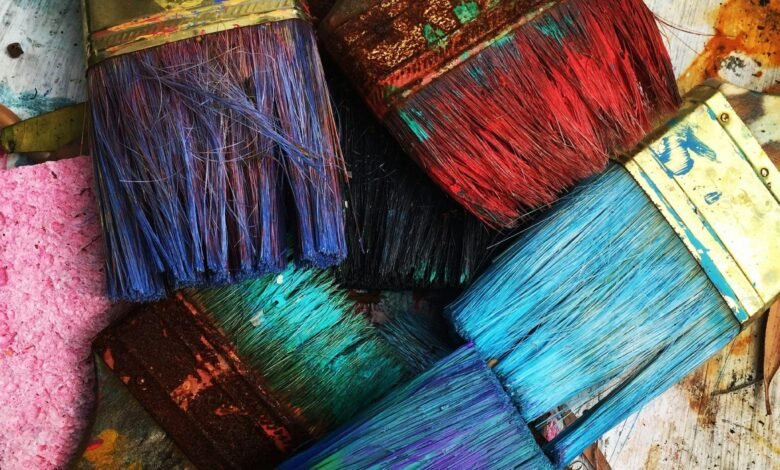
Painting the inside of your home can change the entire feeling. Fresh paint brings new color and energy, but many people make small mistakes that hurt the final look. A smooth paint job needs planning, patience, and the right steps. Skipping any part can leave walls looking messy or unfinished.
Learning about the most common painting mistakes can save time and money. Instead of rushing through the work, knowing what to avoid helps you get results that last. Each section below explains one mistake and how to stop it from happening.
1. Skipping the Surface Prep
One of the biggest mistakes is painting right over dirty or rough walls. Dust, grease, and tiny cracks stop the paint from sticking well. The paint may peel, bubble, or look patchy later. To avoid this, clean the walls with a mild detergent and water. Fill holes or cracks with spackle, and sand rough spots to make the surface smooth. Wipe away the dust and let the wall dry fully before painting. Taking extra time on prep makes the paint glide on better and last longer.
A good idea here is to consult the pros, especially if you want to revamp your business premises. Professionals begin by cleaning, patching, and sanding walls before painting because they know skipping this step causes future damage. So, if you live in New Hampshire, team up with specialists of commercial painting in Concord to ensure a flawless finish.
See also: Peer to Peer Lending App Development: Transforming the FinTech Landscape
2. Using Low-Quality Paint
Trying to save money by buying cheap paint often backfires. Low-quality paint usually has less pigment and weaker binders, which means it takes more coats to cover the wall. It can dry unevenly and chip faster, leaving your walls looking dull.
Choose paint that has good coverage and a durable finish. High-quality paint may cost more at first, but it saves money over time because you use fewer coats and it lasts longer. Reading product labels and checking reviews can help you find reliable brands that suit your budget.
3. Forgetting to Use Primer
Skipping primer is another common mistake that affects how the final color looks. Primer helps paint stick to the wall and creates a smooth, even base. Without primer, paint can soak into the surface and appear blotchy or streaky, especially on new drywall or patched areas.
Always use a primer before painting, especially on bare walls or over dark colors. Primer helps block stains, seals the surface, and makes colors brighter and more accurate. It adds an extra step, but it helps your paint job look professional and last longer.
4. Ignoring the Right Tools
Using the wrong tools makes painting harder and the finish less smooth. Cheap brushes can shed bristles, and low-quality rollers may leave lint behind. The wrong roller thickness can also leave an uneven texture on the wall.
Invest in good-quality brushes and rollers made for the type of paint you are using. Use angled brushes for edges and trim, and choose roller covers with the right nap for your wall texture. Quality tools spread paint evenly, save time, and give cleaner results.
5. Painting Without Testing the Color
Many people pick a paint color they like in the store and apply it right away, only to regret it later. Colors can look different under your home’s lighting compared to the store’s lights. This often leads to repainting, which costs more time and paint.
Always test paint colors on a small section of your wall before painting the whole room. Look at the test patch during different times of the day to see how it reacts to natural and artificial light. This helps you choose a color that truly works in your space.
6. Not Taping Edges Properly
Painting without taping the edges can leave messy, uneven lines. Paint can bleed onto trim, ceilings, or nearby walls, making the room look sloppy. Many skip this step to save time, but end up spending more time fixing mistakes.
Use painter’s tape to cover trim, baseboards, and ceiling lines before you begin. Press the tape down firmly to seal the edges. After painting, remove the tape carefully while the paint is still slightly wet to get sharp, clean lines.
7. Overloading the Brush or Roller
Dipping the brush or roller too deep into the paint causes drips and streaks. Thick layers of paint take longer to dry and can lead to uneven coverage or sagging marks on the wall.
Instead, dip only the tip of the brush or roller into the paint. Apply thin, even coats and let each coat dry before adding another. This gives a smoother finish and avoids wasting paint.
8. Painting Over Wet Patches
Painting over patches or spackle that are not fully dry traps moisture inside the wall. This can cause paint to bubble or peel later. Rushing through drying times is a common mistake when trying to finish quickly.
Always allow repaired areas to dry fully before sanding and painting. Check the product label for drying times, and touch the area gently to ensure it is firm and dry. Patience during this step helps keep the paint job strong.
9. Ignoring Room Temperature and Humidity
Temperature and humidity affect how paint dries. Painting in a very hot or humid room can make the paint dry too fast on the surface while staying wet underneath. This leads to cracks, streaks, and uneven texture.
Paint in normal room conditions whenever possible. Open windows for airflow and use fans or dehumidifiers if needed. Follow the paint manufacturer’s recommended temperature range to get the best results.
10. Failing to Stir the Paint Well
Paint often separates while sitting on the shelf. If you don’t stir it well, the first part may go on thin while the end is thick and clumpy. This makes the wall color uneven.
Before starting, stir the paint thoroughly until the color looks even. Use a paint stick and mix from the bottom to the top. Stir again each time you pour more paint to keep it consistent.
11. Painting Too Quickly
Rushing while painting causes streaks, missed spots, and brush marks. People often move the brush or roller too fast, which spreads the paint unevenly.
Slow down and apply steady, even strokes. Overlap each stroke slightly and keep a wet edge while painting. Taking your time helps the paint level out smoothly.
Final Thoughts
Interior painting can change the feel of your home, but small mistakes can spoil the result. Most problems happen from skipping prep, rushing steps, or using the wrong tools. Focusing on each step, from cleaning to the final coat, makes your walls look smooth and fresh.
By avoiding these common mistakes, you save time and effort. Careful work makes the paint last longer and keeps your rooms looking clean and bright for years.

